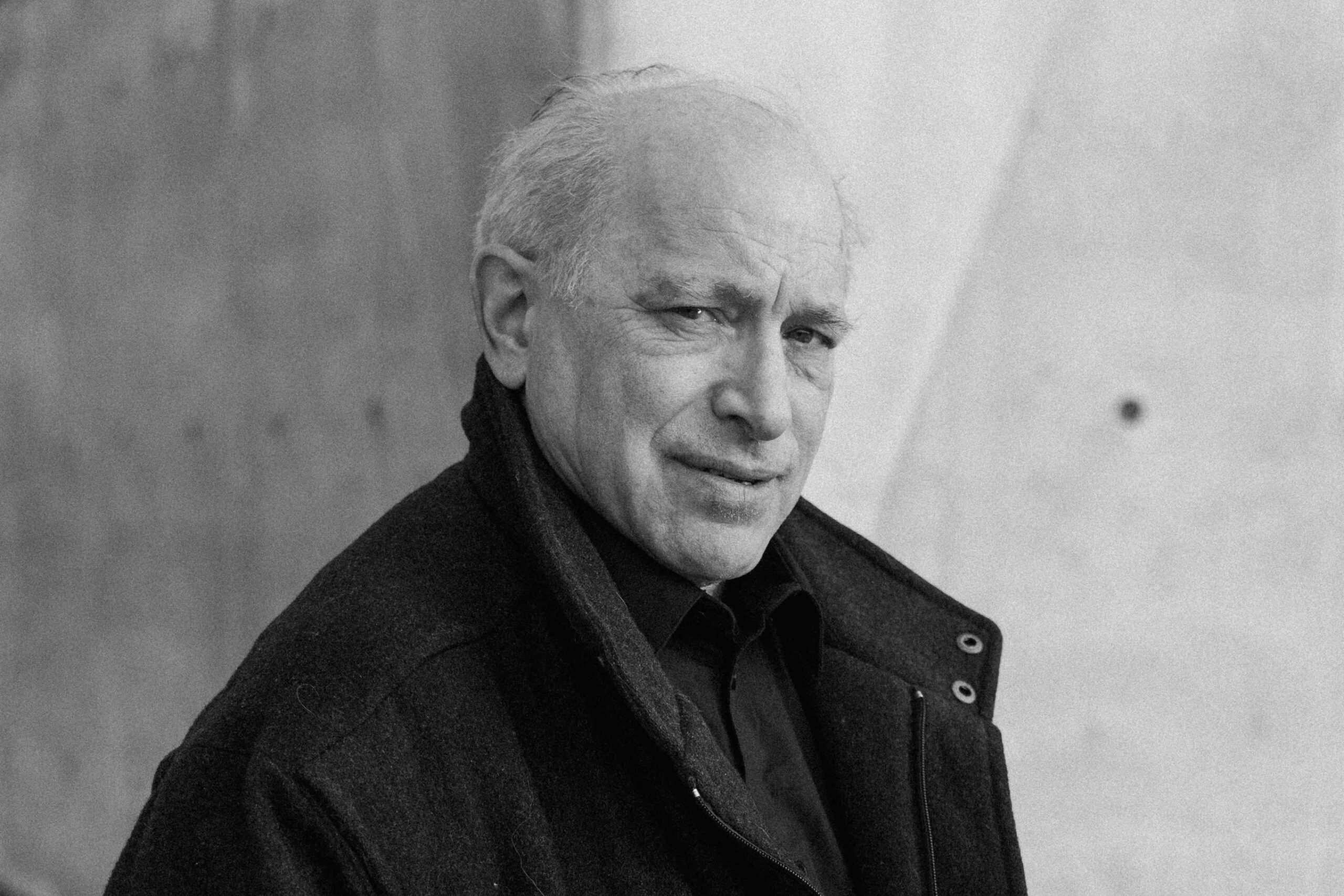True Voice: A Conversation with Sasha Berliner
|
Getting your Trinity Audio player ready...
|
Onyx has long been a mysterious substance. Many ancient civilizations used the mineral in ornate jewelry but upheld the stone for more than its attractiveness. The Romans believed a necklace engraved with the image of Mars, their god of war, would provide courage to soldiers in battle. The Persians believed onyx could help with epilepsy. Later, English midwives used it to ease childbirth. This combination of beauty and bewilderment makes Onyx (JMI, 2022) the perfect title for vibraphonist Sasha Berliner’s second outing as a leader.
Berliner’s chosen instrument has long been associated with sounds a bit left of center. The vibraphone’s spinning fans generate a tremolo effect, uncommon to most instruments. The vibraphone is also equal parts acoustic and electric. An early Twentieth Century creation, it is an unabashedly modern instrument with an unconventional timbral range. There is a reason why Arthur Lyman used the vibes so heavily in his exotica recordings.
Rather than shy away from these otherworldly aesthetics, Berliner seemingly mines for them. This is particularly evident on “Jade,” where echoing vibes undergird a somewhat steady drum shuffle as if portraying the movement of pickaxes in a cave searching for the song’s namesake. Similarly, on“Ephemerality,” vibes swerve and intertwine with piano and synthesizer. “Crescent Park (In Elliptical Time)”, a reflection on memories of loves past, sounds equally affixed to the present moment and those lost in all but a memory. As if to prove these unusual qualities come as much from her mallets as her compositional pen, Berliner also offers two nontraditional versions of “My Funny Valentine,” a song only a few decades younger than the vibraphone itself. Joining Berliner in her sonic spelunking is a powerful team of artistic excavators: drummer Marcus Gilmore, bassist Burniss Travis II, and pianist/keyboardist James Francies. On certain treks, Jaleel Shaw, Thana Alexa, and Julius Rodriguez also join the crew.
We sat down with Berliner to discuss the album, her influences, and the importance of having your own unique artistic voice.
PostGenre: Going back to before the vibraphone, you started as a rock drummer?
Sasha Berliner: That’s right. However, I also had some knowledge of the piano before starting on the vibes.
PG: Do you feel that starting as a rock drummer changed how you approach the vibraphone compared to someone with a more traditional jazz background or who started on the vibes as their first instrument?
SB: Yes. The fact I started on drums gave me a better understanding of rhythm but a weakened understanding, at first, of melody and harmony. After I started playing vibraphone, I began focusing more on the melodic and harmonic aspects of music. Of course, that focus made me more interested in composition more generally. Also, some have told me that my phrasing has an interesting rhythmic quality, which could come from my having started on drums.
But the rock influence was more significant to my musical development than the specific instrument. I grew up with every kind of rock music, whether alternative, electronic-leaning, or heavy metal. I have listened to and performed them all over the years. Of course, it’s possible my rock background influenced my approach to vibraphone as well.
PG: Do you see some great divide between these rock influences and those coming from jazz? Or are they united in some way?
SB: I hear a direct line that passes through my influences. There’s something interesting and meditative in the music of Radiohead or Big Thief that is shared with the music of Weather Report, Miles Davis, or Miho Hazama.
Genre is more of a marketing tool. It is also, perhaps, a way for people to initially grasp on to music. But the insistence on genre forces people to just scratch the surface of music. Emphasis on the idea of genre can limit a songwriter because it may restrict them to a very specific timbre or collection of sounds. The concern should be whether certain things sound good together, not from which category you pull them. When composing, I draw on ideas of sounds I have heard throughout my life and how they can fit together without needing to label them.
PG: The vibraphone has a rich history in improvised music. Lionel Hampton, Milt Jackson, Bobby Hutcherson, and Roy Ayers are a few vibraphonists who come to mind, among many. But there also seems to be an increased emphasis on the vibraphone in recent years due to artists like you, Joel Ross, and Patricia Brennan. Do you feel there has been a resurgence of the instrument, or is it merely increased press coverage?
SB: That is an interesting question. It does seem more attention is being paid to the instrument today than in the past.
It’s possible vibraphonists seem to be getting more attention now because they approach their instruments in ways that feel very different than their predecessors. Patricia was one of the first people I saw using pedals and effects on the vibraphone. She inspired me to use them in my own performances. But, beyond technology, Patricia’s approach to improvisation and writing songs are also very unique. As for Joel, he too has developed his own improvisational style on the instrument. You can hear the influences of vibraphonists before him, but he sounds like no one else. Patricia, Joel, and I are also very open to new musical ideas, regardless of how some may label them. And maybe that broad perspective is why it feels there is a resurgence on the instrument. But, as you mentioned, there have long been vibraphonists who have been making great music.
PG: Of course, those who came before also forged their own voices on the instrument. For instance, you can often easily identify Stefon Harris from other vibraphonists.
SB: That’s true.
PG: You previously studied with Harris. What did you learn the most from him?
SB: Stefon taught me a lot about harmony and phrasing. He greatly encouraged me to value my gifts. Stefon believes that someone’s success on their instrument is tied to how much they can display their gifts on the instrument. For a long time, I felt my ideas were somehow invalid because they didn’t sound like anyone else. I could mimic those who came before but did not find value in doing so. Instead, I wanted to phrase things my way. Stefon gave me the confidence to follow my own voice because he has had great success in following his own.
Stefon also helped me make my phrasing sound more natural; to better resemble the human speaking voice. He’s huge on making sure that your music has a human quality to it. You can also hear that in the music of Bobby Hutcherson or Steve Nelson, both of whom are significant influences of mine. Stefon guided me in reading random phrases of text and emulating the cadence and patterns of their speaking sound onto my instrument. When you can do that, technical qualities like time signature or palpable rhythm are not as important. In a way, you escape the structures of theoretical formality to make music that comes more naturally to us all. Concepts like harmony are still important, but even those are approached primarily as a means of bringing out the more human elements of the music. Stefon has found a way to create advanced harmony that goes beyond the basic ideas of major and minor and digs into the roots of human expression. In the real world, life is more complex than pure happiness or sadness. How do you communicate fear, excitement, or bewilderment through music? There are so many complex emotions that can’t be expressed through strict adherence to concepts of music theory. Stefon taught me how to better convey those emotions through music.
PG: Somewhat related, your music often has an atmospheric quality to it. While melody and harmony are important, you also place significant focus on the sonic environment in general. You can particularly sense it in Onyx’s first version of “My Funny Valentine.”
SB: Yes, focusing on setting the mood and manipulating the pedals rather than the traditional structure of the song allows you to balance free approaches with more structured ones. It provides for increased improvisational freedom without losing the composition’s basic structure. In that way, I also see the focus on mood setting as being directly in the historical line of “jazz” or improvised music, in the sense that often you are trying to figure out how to best balance improvisation and through composition.
PG: Why explore such a standard tune as “My Funny Valentine,” let alone do so twice?
SB: There are so many songs that you learn when you are first starting in jazz- compositions like “Blue Monk” or “The Girl from Ipanema” – that have become so overplayed they have become a little corny. But those songs did not start that way. People initially latched onto those songs because there was something beautiful about them, even if, eventually, their overplaying now gives them a somewhat negative reputation in some sense. “My Funny Valentine” is certainly one of those songs. While there are some stunningly beautiful renditions of the song, it also has a reputation for being a cornier jazz standard due to its somewhat repetitive variations. I wanted to go in the opposite direction and transform into a version that sounds very different from what came before but still allows you to pick out the melody and recognize the song. That was particularly the case with the song’s bridge, where I flipped the normal chord progression to set up a rolling and rumbling darkness. I naturally tend to channel that atmospheric quality in most of my music anyway. I knew I wanted to do something different harmonically, leave the key of the song as much as possible and, instead, make certain chord substitutions or extend some phrases. I wanted to try to add some life to an overplayed standard.
PG: Other than the two versions of “ My Funny Valentine”, all of the other compositions on Onyx are original compositions. How do you feel your compositional skills have developed since your prior album, Azalea (self-release, 2019)?
SB: I now have more confidence, passion, and fire. I see Azalea as primarily a coming-of-age record. I wrote many of the songs on that album right after I moved to New York for the first time. It also includes some pieces I wrote in high school and my very first compositions as an adult. Much of Azalea was my testing the waters, trying to find certain sounds, and figuring out who I am as both a composer and an instrumentalist. In that sense, Azalea is very different from Onyx. I think Onyx is a more mature recording and reflects a sophistication that wasn’t present on Azalea.
PG: You named both albums after natural items – flowers (Azalea) and minerals (Onyx). Do you sense a special relationship between music and nature?
SB: Yes, though there is also something to be said about me aesthetically liking nature. Pretty much all of my tattoos are of flowers or leaves. As to music specifically, I like to reflect real-life experiences in my music. I don’t tend to write about fictional narratives. I think the only fantastical thing I’ve written about was dreams. But, in a way, those are real as well. There is certainly a connection between my music and the natural world. As far as the titles of my albums, I chose words that describe the music on the album. The music on Azalea is flowery. Onyx is very dark and beautiful, like the mineral.
PG: Since you are also a literary writer, it makes sense you would be drawn to metaphors. Do you see a connection between your literary writings and musical compositions?
SB: Absolutely. I can see a clear connection between my voice on the vibraphone and that in my writings. They share both buoyancy and meticulousness. My writing can be dense, and sometimes, so can my playing. But both also always have a flow and intention behind them.
PG: You write about many topics but are particularly known for your writings on gender. Obviously, there is still work to be done, but do you feel things are improving in the music industry on gender disparity?
SB: That is a good question with a complicated answer. There are certainly more women in jazz, whether as bandleaders or sidewomen. I think many people consciously consider the makeup of their bands when forming new groups. Many people are actively aware of the gender makeup of their groups. Not everyone, obviously, but an increasing number. But there are also still festivals or bands that have a very old-school way of thinking or that think gender does not matter.
I’ve also noticed that people don’t want to invest in young female talent as much as women artists who are a bit older. It still seems to take female artists longer to get the credibility and opportunities they deserve compared to their male counterparts. I’m not even referring to myself in this sense, but other women I have seen who are killing it on the scene, but for whom it takes such a long time – 10 years or so – to get any significant recognition for their music. There is a lack of support for young women starting in music. And, when women make mistakes as artists, they are less likely to be written off as part of the artistic growth process. We need to do something to better support young female artists in the earlier stages of their careers. There is always more work to be done. Of course, I could say the same thing about race or sexual orientation as well.
PG: It seems that people often tend to be needlessly unforgiving of what they see as a mistake. In some of these cases, it is not an artistic misstep at all, but an audience who has not quite caught up to the artist. For instance, On the Corner (Columbia, 1972) was roundly blasted when it came out but is now held as one of Miles Davis’ greatest albums. I’m sure it is even worse for many female artists.
SB: Yeah, that’s a very good point. There’s something to be said about artists having a space and opportunity to take risks. That’s true regardless of gender, race, identity, or anything else. It sometimes takes people a while to catch on when an artist is doing something sonically new. While it may affect women more, it can ultimately affect anyone. We all just need more open hearts, ears, and minds. We all need to avoid writing people off immediately. We all have to give people opportunities to reinvent themselves, improve, and grow as artists. After all, the truly great artists never stay the same. Instead, they stay true to themselves while also changing and evolving.
PG: Which ties back to what you were saying earlier about Stefon Harris and finding your own voice.
SB: Yeah, absolutely. And, often, that is the more difficult task; confiding in yourself.
Onyx is now available on Bandcamp. More information on Berliner is available on her website.
Photo Credit: Adrien Tillmann




One thought on “True Voice: A Conversation with Sasha Berliner”